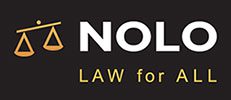
Intersection accidents happen for various reasons.
Often one driver blows through a light or stop sign.
Sometimes a driver speeds into an intersection, so others have little time to get out of the way.
Accidents often happen when drivers attempt to “beat the light” continuing even after the yellow turns red. Add driver distraction, weather and overall frustration into the mix and intersection accidents happen daily in the U.S.
Some accidents present little doubt as to cause. One car simply runs the sign or the light and the other did nothing wrong. Or one car sits still waiting at a red light and the other fails to stop, slamming into it in the back.
Then other accidents present a challenge. Both drivers were looking away. Or a collision at an uncontrolled intersection leaves both drivers blaming the other. Worried about insurance rates drivers often fight, either at the scene or afterwards. In a typical liability dispute one driver claims the other ran the red, the other argues the first driver started up too soon.
Some disputed intersection accidents leave those who were not at the scene scratching their heads. Who tells the truth? Whose version defies reality? Is the failure to agree in good faith, a mistaken observation or simply an outright lie?
When drivers argue after an accident, how is “fault” determined?
People who did not actually see a collision take place often find themselves in the position of needing to find fault. Law enforcement, insurance adjusters, courts, attorneys and others face the task of figuring out what happened.
The first step involves collecting all of the evidence. The list includes:
- skid marks
- photos of vehicles and roadway
- points of impact
- intersection layout
- witness statements
- vehicle data
- paint transfer
Other evidence can play into the post-accident review, depending on the case. Common sense and “rules of the road” then help sift through the evidence and arrive at the truth. Factfinders apply accident facts to the “rules of the road” and other laws and regulations, hopefully to arrive at a fault determination.
Massachusetts adopted a list of actual legal “presumptions” used in this process and the regulations, as adopted under the law, are called “Standards of Fault”.
Here are twelve presumptions used to determine fault after a car accident:
1. Rear End Collisions
The operator of a vehicle which is in a collision with the rear end of another vehicle is presumed to be more than 50% at fault. OK that one’s easy. Keep reading.
2. Out of Lane Collisions
A motor vehicle operator is presumed more than 50% at fault when operating a vehicle partially or completely out of its lane and is in a collision with another vehicle:
- While changing lanes or turning into or across the other vehicle’s lane.
- Being passed by another vehicle which is properly in its lane.
- When passing another vehicle, the other vehicle properly in its lane.
3. Failing to signal
The operator of a vehicle is presumed more than 50% at fault when in a collision while failing to signal as required by law before turning or changing lanes.
4. Failing to proceed with caution from traffic control signal or sign
A motor vehicle operator is presumed more than 50% at fault when failing to obey a traffic control signal or sign, or fails to proceed from a signal or sign with due caution and is then in a collision. This includes but is not limited to stop signs, yield signs and traffic lights.
5. Wrong side of the road
This should be fairly obvious but it’s the law that an operator is at fault when driving a vehicle that collides with another vehicle, moving in the opposite direction, which is in the proper side of the road.
6. Leaving or Exiting from a Parked Position, Parking Lot, Alley or Driveway
The operator of a vehicle is presumed more than 50% at fault when operating a vehicle leaving or exiting a parked position, parking lot, alley or driveway, and is involved in a collision with another vehicle.
7. Single Vehicle Collision
The operator of a vehicle which is the only vehicle involved in a collision is presumed at fault.
8. Unattended Rolling Vehicle
Anyone leaving a vehicle unattended which then rolls, causing a collision is presumed more than 50% at fault.
9. Accident while Merging or Entering a Rotary
A driver is presumed at fault, or more than 50% at fault when operating a vehicle merging onto a highway or entering a rotary when involved in a collision with another vehicle that was already on the highway or in the rotary.
10. No-contact Accident
A motor vehicle operator is presumed more than 50% at fault despite lack of contact with another vehicle “but whose actions cause the collision of one or more vehicles”.
11. Failing to Yield to Emergency Vehicles
If you’re in a collision resulting from your failure to yield to an emergency vehicle you are presumed to be more than 50% at fault.
12. “T” Intersection Accidents
The operator coming from the roadway that terminates onto another thoroughfare and whose vehicle is in a collision with another vehicle on the intersecting thoroughfare is presumed at fault. In other words the driver coming from the “stem” of the T is presumed at fault.
Note that the rules summarized above mention that one operator or the other is presumed at fault. In the law a presumption creates a conclusion where a certain set of facts exist. Presumptions can be rebutted.
Once a presumption is created, the person hurt by the determination overcomes it only by producing sufficient evidence. In a courtroom a presumption remains unless a preponderance of evidence outweighs it. This is a fact determination made by a judge or jury. But once raised, a presumption places the burden to prove it wrong on the person hurt by the presumption.
Are Intersection Accidents “He Said She Said?”
The above 12 points summarize Massachusetts standards of fault. At the same time, they mirror standards in most states. For example, New Hampshire law spells out what we generally call the “rules of the road”. They exist in over 150 subsections of the Revised Statutes Annotated, Chapter 265.
After an accident or other dispute people often say it’s a “He Said She Said”. But the rules and the standards summarized above often help break through the war of words. As we’ve said in another blog article, there’s really more to it than simply he said she said.
If you have been injured through no fault of your own we urge you to let us help. If you or a loved one were hurt due to another’s negligence or recklessness you have the right to hold them accountable and seek compensation for the resulting injuries. While insurance companies attempt to limit what they pay, injury victims and their families become uncertain how to proceed and what the law allows.
Call or contact us through this website now and schedule a free consultation.
Sources:
Standards of Fault, 211 CMR 74.00, Massachusetts Division of Insurance. (Adopted under authority of M.G.L. c. 26, § 8A, M.G.L. c. 175, § 113P.)
New Hampshire Rules of the Road, RSA 265.
Visits: 125




